
American consumers and retailers waste an estimated 133 billion pounds of food annually. While the nation’s food waste amounts to nearly $162 billion a year, tens of millions of Americans struggle to afford food every day.
The U.S. Department of Agriculture defines food insecurity as inadequate or uncertain access to food. People and households who are food insecure report eating lower quality food, disrupted eating patterns, and hunger. An estimated 13.4% of Americans live in food-insecure households.
Food insecurity can be exacerbated by poverty and food deserts, and it disproportionately affects poor, rural areas. Many counties on this list are home to or overlap with American Indian reservations, which, due to unique business regulations, poor access to amenities, as well as housing challenges, have historically faced extreme rural poverty.
To determine the counties with the highest food insecurity rate in every state, 24/7 Wall St. reviewed data from the national food bank network Feeding America.
Click here to see the counties going hungry in every state.
Click here to see the detailed findings and methodology.

Source: Wikimedia Commons
1. Wilcox County, Alabama
> County food insecurity rate: 32.2%
> State food insecurity rate: 17.7%
> County poverty rate: 37.7%
> Households in rural areas: 100%
[in-text-ad]

Source: James Joel / Flickr
2. Kusilvak Census Area, Alaska
> County food insecurity rate: 27.1%
> State food insecurity rate: 13.9%
> County poverty rate: 33.3%
> Households in rural areas: N/A

Source: mark byzewski / Flickr
3. Apache County, Arizona
> County food insecurity rate: 26.6%
> State food insecurity rate: 15.8%
> County poverty rate: 36.6%
> Households in rural areas: 78.2%
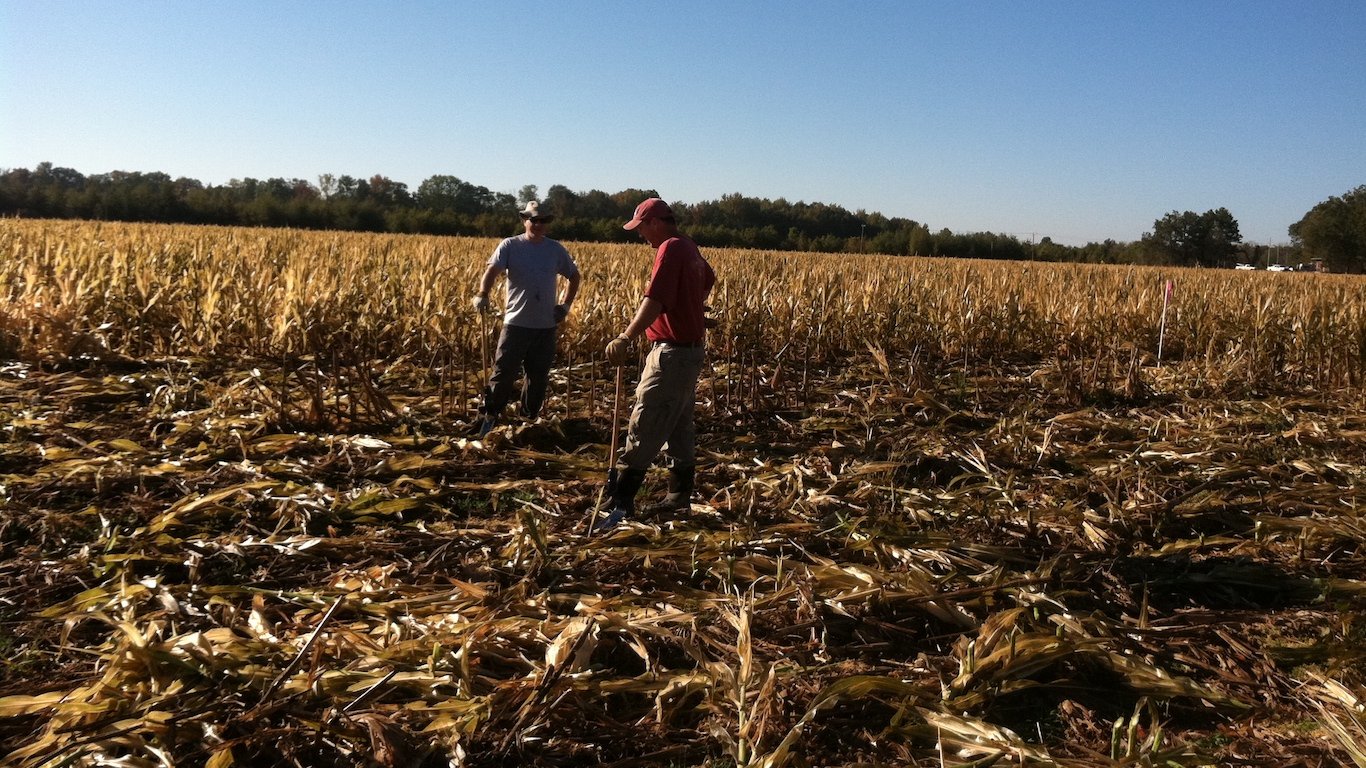
Source: https://www.flickr.com/photos/jcbrandon/
4. Phillips County, Arkansas
> County food insecurity rate: 31.1%
> State food insecurity rate: 18.4%
> County poverty rate: 34.1%
> Households in rural areas: 49.0%
[in-text-ad-2]

Source: https://www.flickr.com/photos/23660854@N07/
5. Siskiyou County, California
> County food insecurity rate: 19.6%
> State food insecurity rate: 12.5%
> County poverty rate: 23.1%
> Households in rural areas: 68.4%

Source: Thinkstock
6. Fremont County, Colorado
> County food insecurity rate: 15.5%
> State food insecurity rate: 12.2%
> County poverty rate: 17.4%
> Households in rural areas: 35.3%
[in-text-ad]

Source: Thinkstock
7. New Haven County, Connecticut
> County food insecurity rate: 12.9%
> State food insecurity rate: 12.2%
> County poverty rate: 13.0%
> Households in rural areas: 3.3%

Source: JERRYE and ROY KLOTZ MD / Wikimedia Commons
8. Kent County, Delaware
> County food insecurity rate: 13.3%
> State food insecurity rate: 12.1%
> County poverty rate: 13.5%
> Households in rural areas: 27.2%

Source: Ebyabe / Wikimedia Commons
9. Gadsden County, Florida
> County food insecurity rate: 24.6%
> State food insecurity rate: 15.1%
> County poverty rate: 27.1%
> Households in rural areas: 68.5%
[in-text-ad-2]

Source: A P Wood / Wikimedia Commons
10. Clay County, Georgia
> County food insecurity rate: 29.3%
> State food insecurity rate: 16.2%
> County poverty rate: 42.2%
> Households in rural areas: 100%

Source: Djzanni at English Wikipedia / Wikimedia Commons
11. Kalawao County, Hawaii
> County food insecurity rate: 20.3%
> State food insecurity rate: 12.8%
> County poverty rate: 15.2%
> Households in rural areas: 100%
[in-text-ad]

Source: chanceinator / Public Domain / Wikimedia Commons
12. Madison County, Idaho
> County food insecurity rate: 20.9%
> State food insecurity rate: 14.0%
> County poverty rate: 35.7%
> Households in rural areas: 29.1%

Source: https://www.flickr.com/photos/pasa/
13. Alexander County, Illinois
> County food insecurity rate: 23.3%
> State food insecurity rate: 11.7%
> County poverty rate: 34.2%
> Households in rural areas: 56.4%

Source: Wikimedia Commons
14. Marion County, Indiana
> County food insecurity rate: 18.6%
> State food insecurity rate: 14.4%
> County poverty rate: 21.1%
> Households in rural areas: 0.5%
[in-text-ad-2]
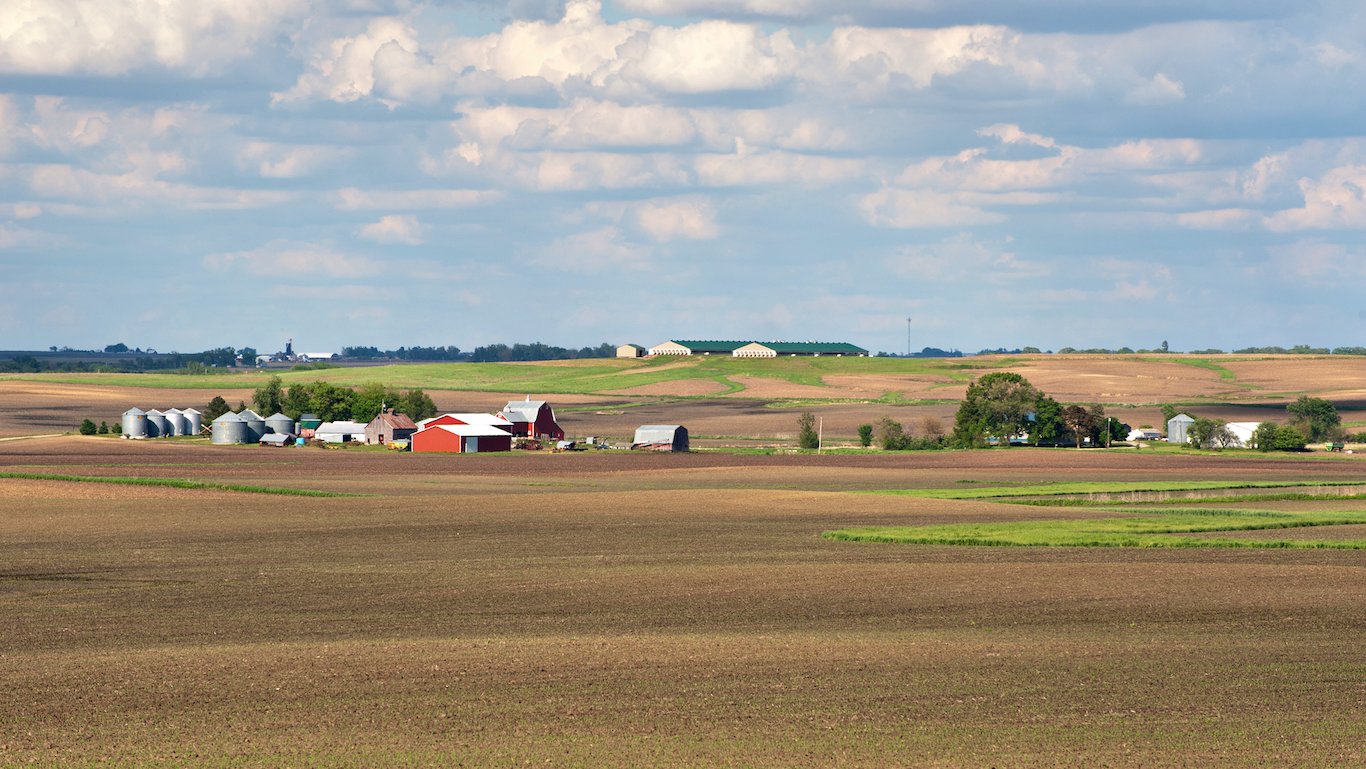
Source: Carl Wycoff / Wikimedia Commons
15. Story County, Iowa
> County food insecurity rate: 15.7%
> State food insecurity rate: 12.0%
> County poverty rate: 22.7%
> Households in rural areas: 17.1%

Source: https://www.flickr.com/photos/garettgabriel/
16. Riley County, Kansas
> County food insecurity rate: 18.2%
> State food insecurity rate: 13.2%
> County poverty rate: 22.5%
> Households in rural areas: 15.8%
[in-text-ad]

Source: https://www.flickr.com/photos/26424952@N00/
17. Wolfe County, Kentucky
> County food insecurity rate: 23.2%
> State food insecurity rate: 15.8%
> County poverty rate: 43.0%
> Households in rural areas: 100%

Source: Billy Hathorn / Wikimedia Commons
18. East Carroll Parish, Louisiana
> County food insecurity rate: 34.1%
> State food insecurity rate: 16.9%
> County poverty rate: 48.0%
> Households in rural areas: 37.3%

Source: Thinkstock
19. Aroostook County, Maine
> County food insecurity rate: 16.6%
> State food insecurity rate: 14.8%
> County poverty rate: 18.5%
> Households in rural areas: 82.5%
[in-text-ad-2]

Source: Thinkstock
20. Baltimore, Maryland
> County food insecurity rate: 23.2%
> State food insecurity rate: 11.4%
> County poverty rate: 23.7%
> Households in rural areas: 0%

Source: Thinkstock
21. Suffolk County, Massachusetts
> County food insecurity rate: 14.9%
> State food insecurity rate: 10.3%
> County poverty rate: 20.7%
> Households in rural areas: 0%
[in-text-ad]

Source: Thinkstock
22. Wayne County, Michigan
> County food insecurity rate: 21.0%
> State food insecurity rate: 15.1%
> County poverty rate: 25.0%
> Households in rural areas: 0.6%

Source: Wikimedia Commons
23. Mahnomen County, Minnesota
> County food insecurity rate: 14.0%
> State food insecurity rate: 9.9%
> County poverty rate: 24.9%
> Households in rural areas: 100%

Source: NatalieMaynor / Wikimedia Commons
24. Jefferson County, Mississippi
> County food insecurity rate: 37.9%
> State food insecurity rate: 21.5%
> County poverty rate: 48.7%
> Households in rural areas: 100%
[in-text-ad-2]

Source: Thinkstock
25. St. Louis, Missouri
> County food insecurity rate: 25.7%
> State food insecurity rate: 15.6%
> County poverty rate: 27.1%
> Households in rural areas: 0%

Source: Thinkstock
26. Glacier County, Montana
> County food insecurity rate: 20.9%
> State food insecurity rate: 13.0%
> County poverty rate: 33.2%
> Households in rural areas: 45.7%
[in-text-ad]

Source: Wikimedia Commons
27. Thurston County, Nebraska
> County food insecurity rate: 18.8%
> State food insecurity rate: 12.3%
> County poverty rate: 30.6%
> Households in rural areas: 100%

Source: https://www.flickr.com/photos/kenlund/
28. Mineral County, Nevada
> County food insecurity rate: 17.6%
> State food insecurity rate: 13.7%
> County poverty rate: 20.2%
> Households in rural areas: 34.2%

Source: Ken Lund / Flickr
29. Coos County, New Hampshire
> County food insecurity rate: 12.3%
> State food insecurity rate: 9.7%
> County poverty rate: 14.1%
> Households in rural areas: 73.9%
[in-text-ad-2]

Source: Thinkstock
30. Essex County, New Jersey
> County food insecurity rate: 17.4%
> State food insecurity rate: 10.8%
> County poverty rate: 17.3%
> Households in rural areas: 0%

Source: BriYYZ / Flickr
31. McKinley County, New Mexico
> County food insecurity rate: 27.2%
> State food insecurity rate: 16.0%
> County poverty rate: 37.5%
> Households in rural areas: 59.3%
[in-text-ad]

Source: Thinkstock
32. Kings County, New York
> County food insecurity rate: 18.8%
> State food insecurity rate: 12.6%
> County poverty rate: 23.2%
> Households in rural areas: 0%

Source: https://www.flickr.com/photos/amerune
33. Edgecombe County, North Carolina
> County food insecurity rate: 26.0%
> State food insecurity rate: 16.5%
> County poverty rate: 26.3%
> Households in rural areas: 44.2%

Source: Wikimedia Commons
34. Rolette County, North Dakota
> County food insecurity rate: 17.4%
> State food insecurity rate: 7.7%
> County poverty rate: 35.5%
> Households in rural areas: 100%
[in-text-ad-2]

Source: Kayura Mendonza / Wikimedia Commons
35. Athens County, Ohio
> County food insecurity rate: 20.4%
> State food insecurity rate: 16.0%
> County poverty rate: 33.0%
> Households in rural areas: 49.3%

Source: Larry D. Moore / Wikimedia Commons
36. Choctaw County, Oklahoma
> County food insecurity rate: 21.7%
> State food insecurity rate: 16.2%
> County poverty rate: 28.8%
> Households in rural areas: 67.1%
[in-text-ad]

Source: https://www.flickr.com/photos/kenlund/
37. Lake County, Oregon
> County food insecurity rate: 16.8%
> State food insecurity rate: 14.2%
> County poverty rate: 18.6%
> Households in rural areas: 65.5%

Source: Thinkstock
38. Philadelphia County, Pennsylvania
> County food insecurity rate: 21.0%
> State food insecurity rate: 13.1%
> County poverty rate: 26.4%
> Households in rural areas: 0%

Source: Thinkstock
39. Providence County, Rhode Island
> County food insecurity rate: 13.5%
> State food insecurity rate: 12.5%
> County poverty rate: 17.7%
> Households in rural areas: 5.1%
[in-text-ad-2]

Source: Upstateherd / Wikimedia Commons
40. Allendale County, South Carolina
> County food insecurity rate: 26.9%
> State food insecurity rate: 15.3%
> County poverty rate: 29.0%
> Households in rural areas: 65.1%
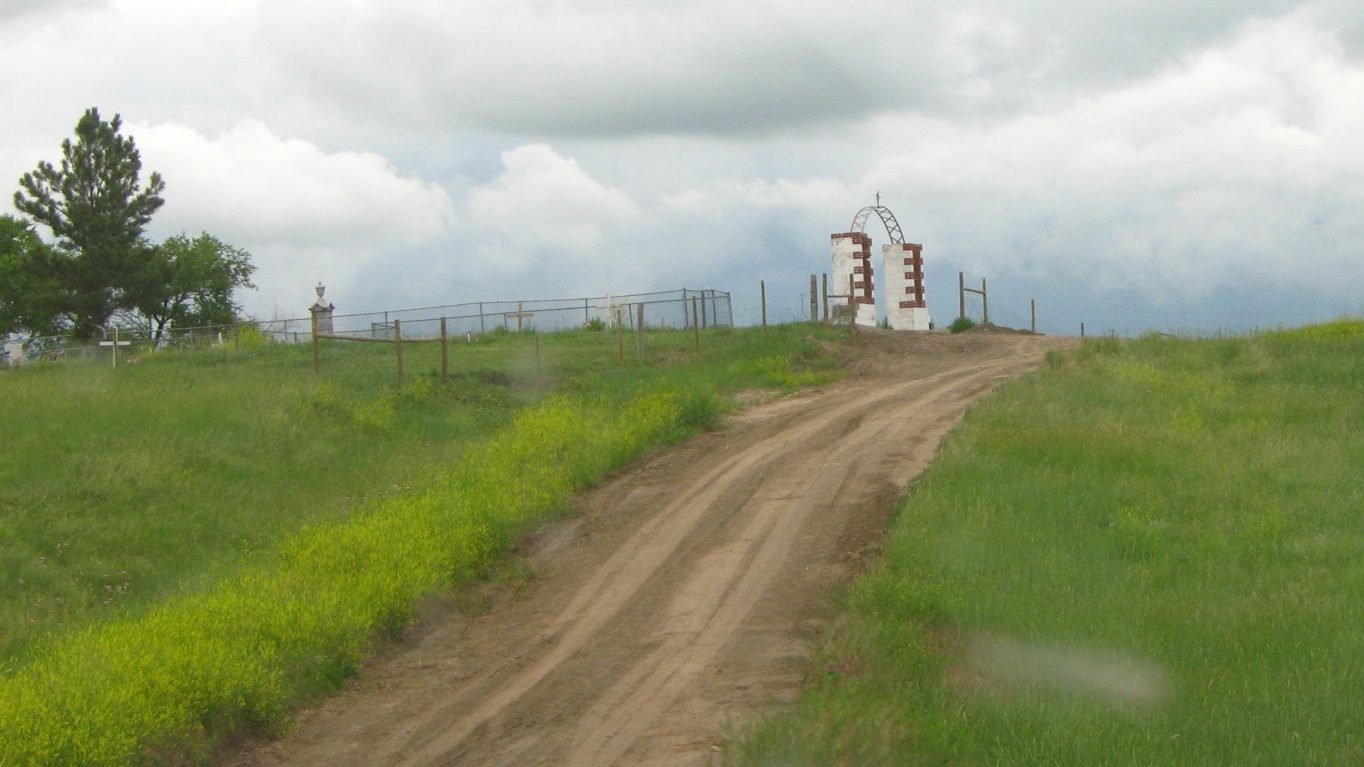
Source: Jbutler18 / Wikimedia Commons
41. Oglala Lakota County, South Dakota
> County food insecurity rate: 27.5%
> State food insecurity rate: 12.1%
> County poverty rate: 53.3%
> Households in rural areas: N/A
[in-text-ad]
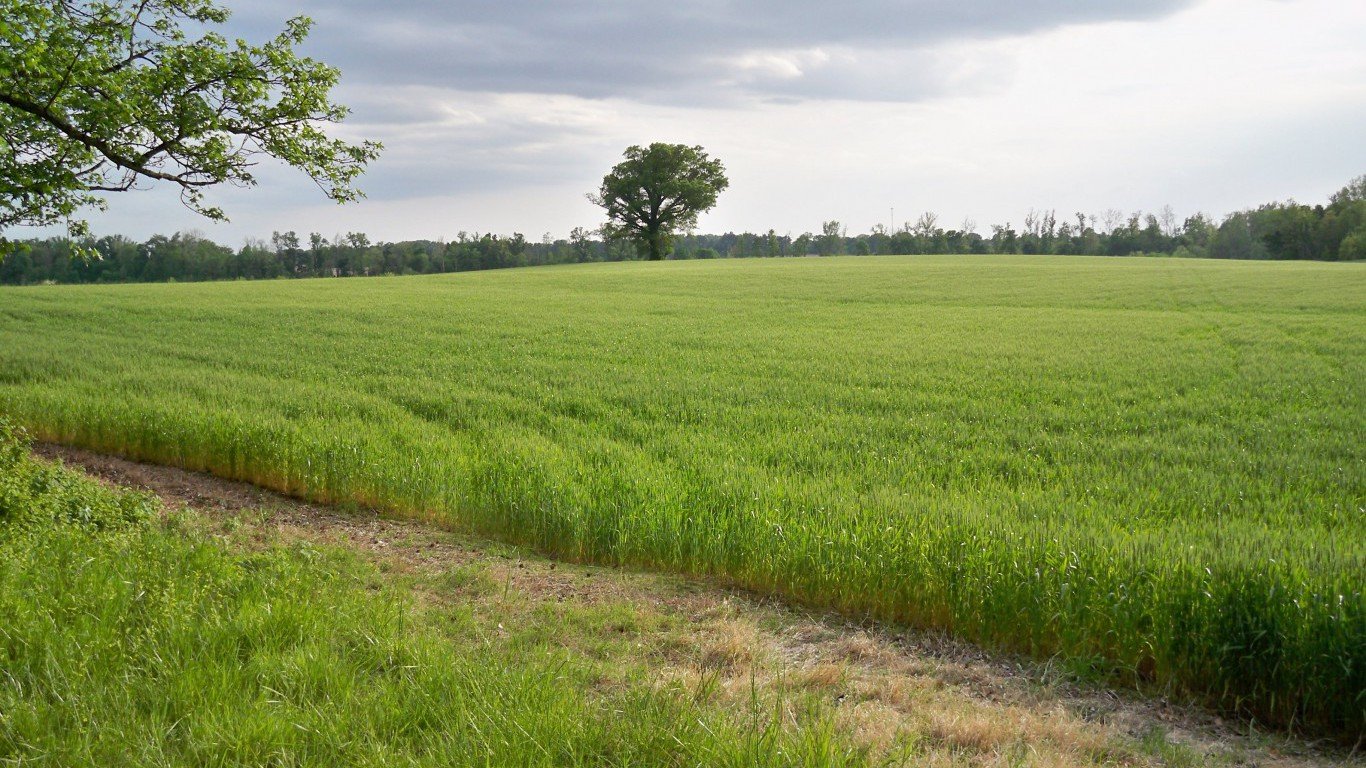
Source: Wikimedia Commons
42. Haywood County, Tennessee
> County food insecurity rate: 22.8%
> State food insecurity rate: 15.4%
> County poverty rate: 22.8%
> Households in rural areas: 48.0%

Source: Larry D. Moore / Wikimedia Commons
43. San Augustine County, Texas
> County food insecurity rate: 25.6%
> State food insecurity rate: 15.7%
> County poverty rate: 24.8%
> Households in rural areas: 100%

Source: Ken Lund / Flickr
44. San Juan County, Utah
> County food insecurity rate: 19.8%
> State food insecurity rate: 13.1%
> County poverty rate: 28.1%
> Households in rural areas: 81.5%
[in-text-ad-2]

Source: https://www.flickr.com/photos/mar_ibert/
45. Essex County, Vermont
> County food insecurity rate: 14.1%
> State food insecurity rate: 11.9%
> County poverty rate: 15.0%
> Households in rural areas: 100%

Source: Ken Lund / Wikimedia Commons
46. Petersburg, Virginia
> County food insecurity rate: 27.8%
> State food insecurity rate: 11.2%
> County poverty rate: 28.0%
> Households in rural areas: 2.0%
[in-text-ad]

Source: Ilyaunfois / Wikimedia Commons
47. Whitman County, Washington
> County food insecurity rate: 19.9%
> State food insecurity rate: 12.8%
> County poverty rate: 31.2%
> Households in rural areas: 31.2%

Source: Magnolia677 / Wikimedia Commons
48. McDowell County, West Virginia
> County food insecurity rate: 22.3%
> State food insecurity rate: 14.9%
> County poverty rate: 35.5%
> Households in rural areas: 86.1%

Source: Royalbroil / Wikimedia Commons
49. Menominee County, Wisconsin
> County food insecurity rate: 18.7%
> State food insecurity rate: 11.0%
> County poverty rate: 35.2%
> Households in rural areas: 100%
[in-text-ad-2]
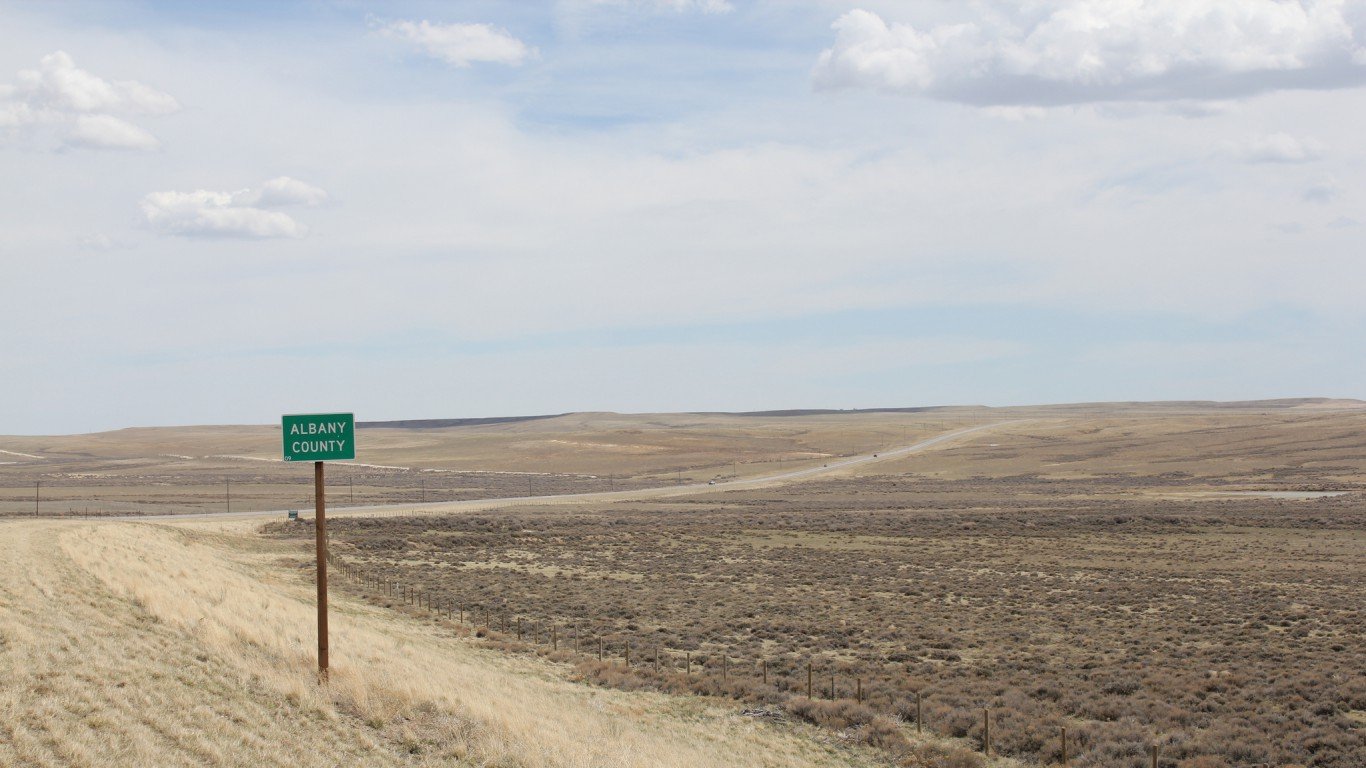
Source: https://www.flickr.com/photos/denverjeffrey/
50. Albany County, Wyoming
> County food insecurity rate: 17.6%
> State food insecurity rate: 12.3%
> County poverty rate: 26.9%
> Households in rural areas: 17.4%
Detailed Findings and Methodology:
One of the largest determinants of food insecurity is income. High-protein foods and fresh produce are expensive in most parts of the country and may not make the shopping lists of many low-income Americans. While there are federal nutrition programs to assist low-income individuals, residents in high poverty counties still find it difficult to access healthy food.
Of the 50 counties with the highest food insecurity rate in each state, 29 also have the highest poverty rate in their respective state.
Poverty is one part of the food access equation — location is another. Rural counties are more likely to have high rates of food insecurity, as many small towns lack critical food infrastructure such as grocery stores and farmers markets that provide affordable, healthy produce.
In rural counties with food access problems it is possible to be considered food insecure even with wages that exceed the federal poverty line. Nearly half of all food insecure individuals, about 19 million Americans, earn at least 130% of the poverty level, the threshold for receiving SNAP benefits in most counties.
In some rural areas, even the individuals who qualify and could use government assistance often struggle to enroll in federal nutrition programs. In large, urban areas, poor individuals are more likely to receive the application and recertification assistance that can help enroll them in food stamp programs. Feeding America found that small, rural towns in the South that were not adjacent to metropolitan areas tended to have the largest shares of food-insecure individuals.
Counties in major metropolitan areas can also have large shares of food insecure residents. Urban areas tend to have relatively high food prices, higher rent, and higher income inequality, all of which are associated with higher food insecurity. Metropolitan areas with high food insecurity rates include Baltimore, St. Louis, Brooklyn, and Philadelphia.
Food insecurity can lead to poor physical health High-protein foods and fresh produce are key components of a healthy diet, and people who lack access to them — particularly children and seniors — are at greater risk adverse health outcomes. In addition to food infrastructure such as grocery stores and food banks, rural areas also tend to lack access to locations for physical activity like gyms and recreation centers — further hurting health outcomes. In 42 of the 50 counties on this list, the share of adults who report being in fair or poor health is larger than the 15% national percentage.
To identify the county with the highest food insecurity rate in every state, 24/7 Wall St. reviewed state and county food insecurity data from national food bank network and advocacy group Feeding America and its report, “Map the Meal Gap 2017: A Report on County and Congressional District Food Insecurity and County Food Cost in the United States in 2015.” The food insecurity rate measures the number of individuals living in households who report inconsistent access to adequate food. Feeding America also estimated the percentage of food-insecure children who live in households likely eligible for federal nutrition assistance in each county. Poverty rates for all people in each county are from the U.S. Census Bureau’s American Community Survey and are five-year averages through 2015. The share of the population living in a rural area also came from the Census Bureau and is for 2010 — the most recent year for which data is available. We also looked at additional measures of health factors and outcomes, including the share of adults reporting fair or poor health from the 2017 County Health Rankings & Roadmaps program, a collaboration between the Robert Wood Johnson Foundation and the University of Wisconsin Population Health Institute.
Essential Tips for Investing: Sponsored
A financial advisor can help you understand the advantages and disadvantages of investment properties. Finding a qualified financial advisor doesn’t have to be hard. SmartAsset’s free tool matches you with up to three financial advisors who serve your area, and you can interview your advisor matches at no cost to decide which one is right for you. If you’re ready to find an advisor who can help you achieve your financial goals, get started now.
Investing in real estate can diversify your portfolio. But expanding your horizons may add additional costs. If you’re an investor looking to minimize expenses, consider checking out online brokerages. They often offer low investment fees, helping you maximize your profit.
Thank you for reading! Have some feedback for us?
Contact the 24/7 Wall St. editorial team.
 24/7 Wall St.
24/7 Wall St.
